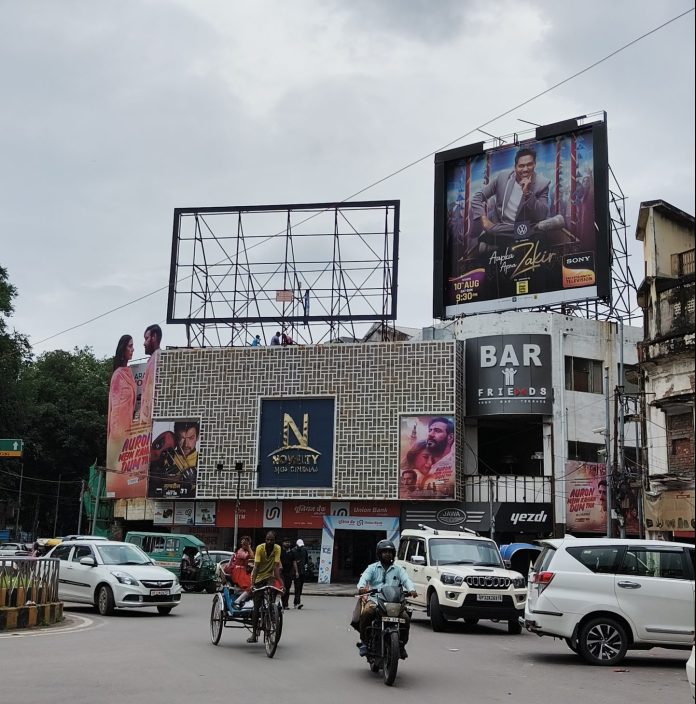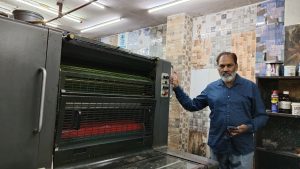
Tanveer Press, Lucknow’s oldest existing printing press established in 1933 by Choudhary Waheed-ud-dama, was passed to Hafeez Nomani in 1947 during the partition of India as Waheed-ud-dama was leaving the country. Hafeez, based out of Bareilly, was a writer, editor, and publisher of several Urdu books.
During a recent visit to Lucknow, Indian Printer and Publisher got the opportunity to meet Hafeez’s son, Haroon Nomani, the present owner of the press and the general secretary of the recently formed Lucknow Printers Association.

Tanveer Press is a known name in Lucknow’s history of signage for election banners and commercial printing with a heavy inclination towards Urdu literature. Haroon Nomani, who joined the business officially in 1980, talked extensively about the transition of printing methodologies from a young age.
“When I started visiting my father’s press, printing was done in lithography,” he said. “There used to be rooms full of printing blocks with inverted characters. It required a lot of time and energy to print. There was no electricity so our only downtime was the tea breaks. Many printers had such fascinating writing in reverse for blocks. I can’t imagine such finesse is possible digitally.”
Lithography is a planographic printmaking process in which a design is drawn onto a flat stone (or prepared metal plate, usually zinc or aluminum) and affixed using a chemical reaction. Lithography can print text or images onto paper or other suitable material.
Nomani says that when electronic presses became available, press owners in Lucknow mentioned in their nameplates if they owned one. Eventually, there came a time when every press owner had at least one electronically enabled printer.

According to Nomani, Partition was a time when his father was not sure if a press business would be viable. “Majority of the aristocrats, laureates, and educators had left India as they had the means and access. Education was not available to all in those times. Those who remained were not very learned. There wasn’t any demand at the time. Slowly, we became acquainted with information bureaus, educational institutions, banks, and rising publishers that gave the business a push.”
In the early 2000s, Nomani expanded to the signage business with flex and vinyl banners for political parties and election campaigns. His clients of printed signage panned across cities and towns starting from Lucknow to the Nepal border. “Through the signage business, our recognition and network grew and we incorporated additional technologies. For signage, we utilize a wide-format roller printer from Konica Minolta. For bulk orders such as examination copies, guide books, and other published books, we utilize a vintage offset press from Heidelberg and own a CTP from Kodak.”

On the current printing scenario in the city, Nomani sounded a little pessimistic. He said without exponential industrialization in the region, the printers of Lucknow will not be able to see growth. Markets such as Delhi, Mumbai, and Gujarat are reaping the benefits of growth in the manufacturing sector either through mass production or their proximity to ports.
Uttar Pradesh is waiting for opportunities to grow both profitably and technologically. Printers are reluctant to add capacities, as ROI means everything in business. Given the uncertain nature of their businesses, they fear advancements will come at a cost, he said.
Nomani said, “Legacy businesses such as ours are simply in the survival mode. We don’t owe anything to the banks either for the property or for any machine. So any profit we make is solely for our employees. People who have worked with us never switched. Some have worked with us for more than one generation. Everyone working with us is perfectly capable of handling all processes involved in the printing business – be it design, machine management or finishing. We do all the job work in both signage, offset, and short-run jobs but keeping the growth trajectory upward is no longer in our cards,” he concludes















